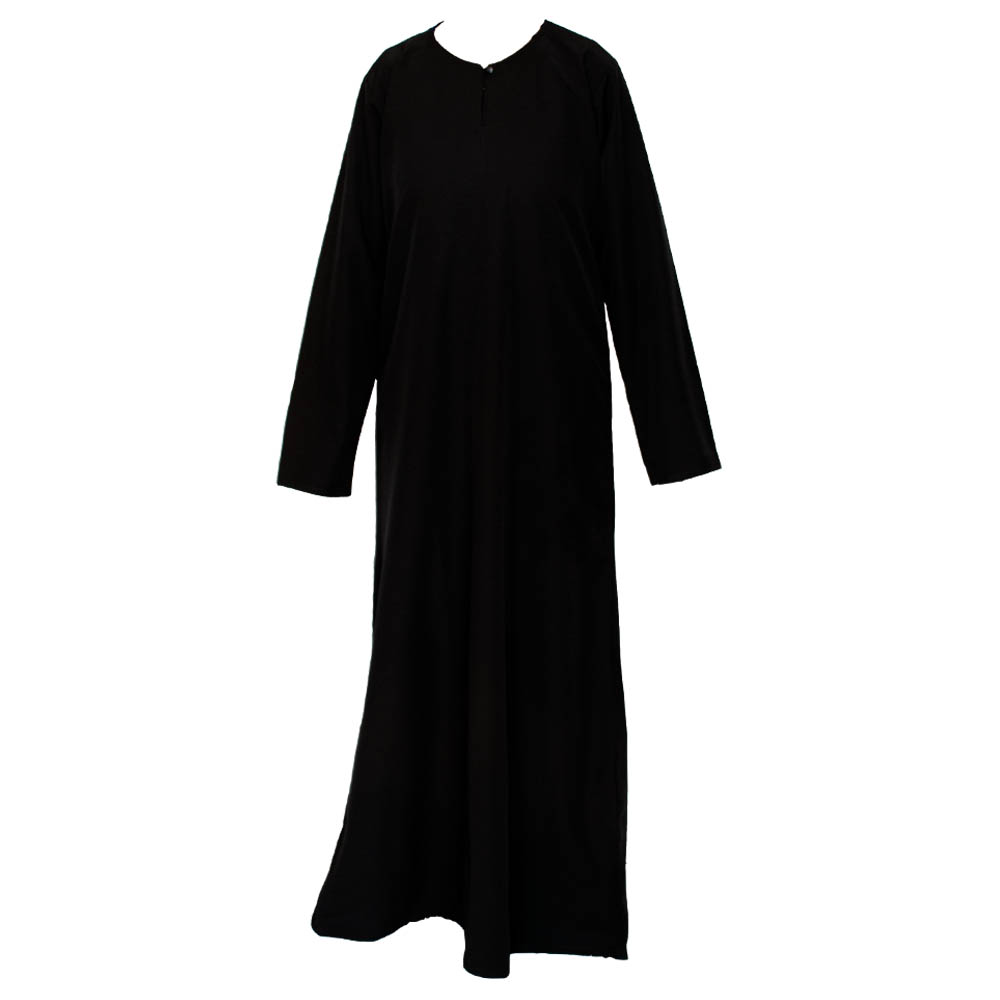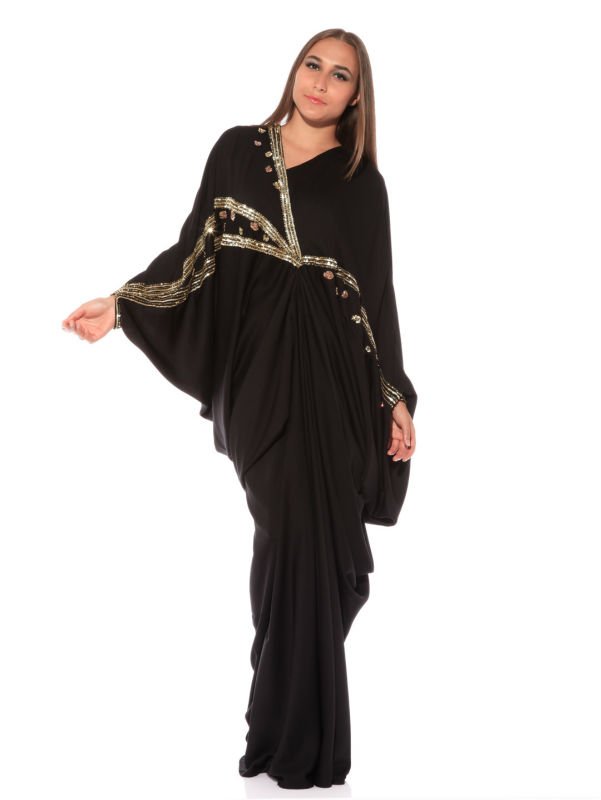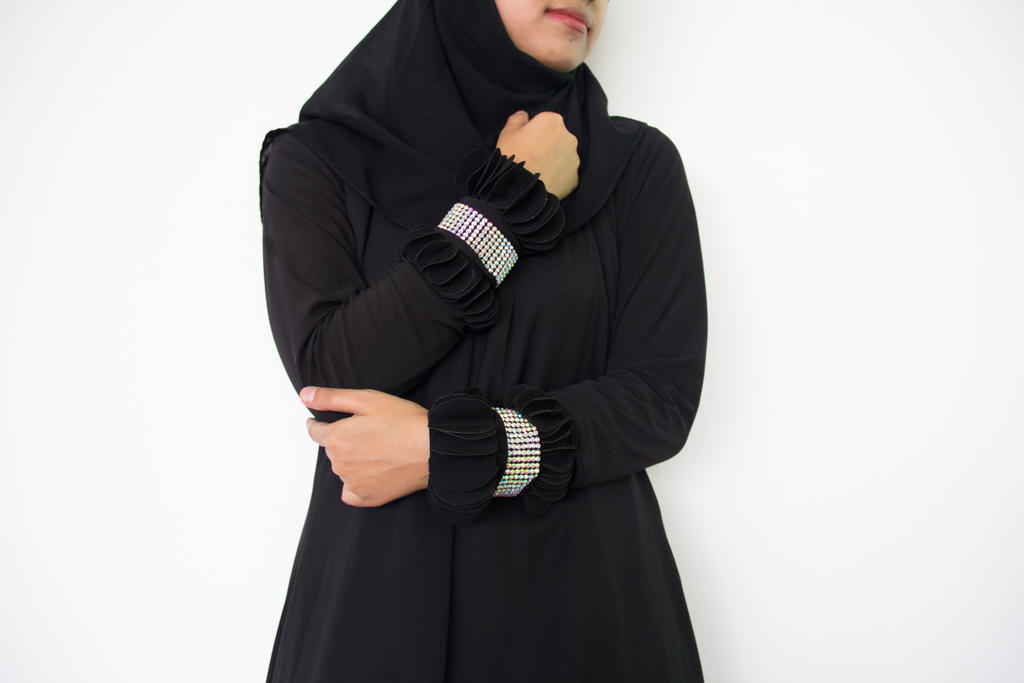About Black Abaya
Source (google.com.pk)
Whenever Saudi Arabia gets brought up in a conversation with people who have never lived there, one of the first things I get asked is if I have to wear the abaya and why, especially why it’s required for non-Muslim foreigners. The fact is abayas have become recognized signs of Saudi society; however, very few people understand the cultural reasoning behind them and often regard them as a religious obligation.
By definition, an abaya is a loose, usually black robe, worn by women in public for “modesty”; it can also be worn with a headscarf and veil. In the KSA, all abayas are black, but they all vary based on different fabrics and designs. Within recent years, abayas have come a long way to include beautiful colored embroidery, beading, gems, crystals and ribbon, making them more attractive than before. For many girls and women living in the KSA, abayas are a fashion statement. A lot of effort can be put into finding the perfect abaya that is eye-catching and nicely tailored, and many ladies often have more than one abaya for different occasions. Religious police have tried unsuccessfully to limit access to these fashionable abayas, claiming that decorated abayas do not represent modesty. Depending on your view, that may be true, but what woman wants to look like a “dementor” all the time?
Ironically, the older generation of Saudi women were not required to wear the abaya. Without facing any religious or ethical problems, they would only cover their hair and dress modestly when going out anywhere. Presently, the abaya has come to be viewed by some Saudis in religious terms. Some consider it a protection for the women from unacceptable male-attention and sexual harassment, but it actually provides none of the above. Instead, it adds a mystery to the woman wearing it, causing men to imagine something too beautiful to be seen which is in fact often very contradictory to what is really under the abaya. It’s true! Even many outsiders who are unfamiliar with Saudi culture tend to associate it with mysterious hidden beauty – The Arabian Nights seems to have its effects on people. Within Saudi society, the abaya functions on a religious and social level, often carrying with it a certain perception of how the woman wearing it should act: walk politely, avoid eye-contact, talk in a low voice, etc…I guess, women shouldn’t be themselves in public, but instead present themselves as the perfectly molded, mysterious, religious, and modest woman.
Westerners and Arabs alike often joke that women in abayas are BMOs (Black Moving Objects)! Yes, even I find the nick-name funny, but it also reveals a sad truth: many people forget that a normal human being is under the black robes. Saudi lifestyle and customs have created a mind-set that triggers many people to think the abaya covers a weak woman who views herself as a sexual object that needs to hide from men for honor’s sake.
Male culture has inflicted the abaya on women by enforcing their attitudes and used religion to support their ideas which are derived from select interpretations of certain verses in the Qur’an. The abaya makes women appear oppressed and submissive, while also being a constant reminder of how men think of women. The question remains, how were women doped into this in the first place? Men used women’s weaknesses to make them believe weak and submissive behavior is desirable. These lovely characteristics were then dubbed “honor” and “morals”. Imaginations went to work, creating abayas that are worn draped over the head or abayas that fit over the shoulders. As for why the color black was chosen, it is most likely due to the fact that it is considered to be the least attractive and most respectable of all colors. It is ironic that the color black, which absorbs the most heat, was chosen for a society that lives in a hot desert. Maybe the color choice also has the added benefit of discouraging women from trekking out into the sun from the coolness of their homes.
There are many explanations and reasonings for wearing the abaya, but in my opinion it’s impractical in modern life and was implemented by men to control women in yet another aspect of their lives. The shocking fact is that some women have let themselves be so brain-washed that they will actually say they are happy wearing it and defend the abaya’s introduction into society. Are they truly happy being deprived of their free will? Wearing an abaya should be a cultural option, not a requirement.
Black Abaya Abaya Designs 2014 Dress Collection Dubai Styles Fashion Pics Photos Images Wallpapers

Black Abaya Abaya Designs 2014 Dress Collection Dubai Styles Fashion Pics Photos Images Wallpapers

Black Abaya Abaya Designs 2014 Dress Collection Dubai Styles Fashion Pics Photos Images Wallpapers

Black Abaya Abaya Designs 2014 Dress Collection Dubai Styles Fashion Pics Photos Images Wallpapers

Black Abaya Abaya Designs 2014 Dress Collection Dubai Styles Fashion Pics Photos Images Wallpapers

Black Abaya Abaya Designs 2014 Dress Collection Dubai Styles Fashion Pics Photos Images Wallpapers

Black Abaya Abaya Designs 2014 Dress Collection Dubai Styles Fashion Pics Photos Images Wallpapers

Black Abaya Abaya Designs 2014 Dress Collection Dubai Styles Fashion Pics Photos Images Wallpapers

Black Abaya Abaya Designs 2014 Dress Collection Dubai Styles Fashion Pics Photos Images Wallpapers

Black Abaya Abaya Designs 2014 Dress Collection Dubai Styles Fashion Pics Photos Images Wallpapers

Black Abaya Abaya Designs 2014 Dress Collection Dubai Styles Fashion Pics Photos Images Wallpapers

Black Abaya Abaya Designs 2014 Dress Collection Dubai Styles Fashion Pics Photos Images Wallpapers

Black Abaya Abaya Designs 2014 Dress Collection Dubai Styles Fashion Pics Photos Images Wallpapers

Black Abaya Abaya Designs 2014 Dress Collection Dubai Styles Fashion Pics Photos Images Wallpapers

Black Abaya Abaya Designs 2014 Dress Collection Dubai Styles Fashion Pics Photos Images Wallpapers

Black Abaya Abaya Designs 2014 Dress Collection Dubai Styles Fashion Pics Photos Images Wallpapers

Black Abaya Abaya Designs 2014 Dress Collection Dubai Styles Fashion Pics Photos Images Wallpapers

Black Abaya Abaya Designs 2014 Dress Collection Dubai Styles Fashion Pics Photos Images Wallpapers

Black Abaya Abaya Designs 2014 Dress Collection Dubai Styles Fashion Pics Photos Images Wallpapers

Black Abaya Abaya Designs 2014 Dress Collection Dubai Styles Fashion Pics Photos Images Wallpapers

Black Abaya Abaya Designs 2014 Dress Collection Dubai Styles Fashion Pics Photos Images Wallpapers

Black Abaya Abaya Designs 2014 Dress Collection Dubai Styles Fashion Pics Photos Images Wallpapers

No comments:
Post a Comment